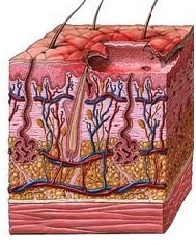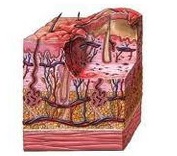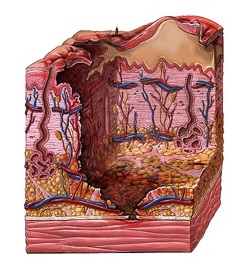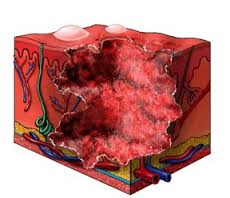Burns can range from minor medical issues to life-threatening emergencies. While scalding liquids tend to be the leading cause of burns in children, most of the severe burns both for adults and children are due to chemicals or electricity. Small scalds and sunburns usually heal with home treatment, but widespread or deep burns require immediate medical attention. Those with severe burns need to be treated in specialized burn units. Some will even need skin grafts for large wounds. Most burns should be first flooded with cool tap water, but you should not use ice as that may damage the burned tissue even more. Now let's look at how to tell the severity of burns and what to put on a burn.

Identifying How Severe Your Burn Is
It is crucial to determine the burn depth as this will help you understand the severity of the burn and choose the best treatment options.
|
Degree |
Description |
|
First degree
|
These are minor burns which will only affect the outermost skin layer, the epidermis. They lead to pain and redness, but usually get better within a few days to a week with basic first-aid. Sunburn is a good example. |
|
Second degree
|
These burns affect the epidermis as well as the dermis, the skin’s second layer. They lead to pain, redness, and swelling. The second-degree burns tend to appear moist or wet. They can also include blisters and severe pain. They may cause scarring if deep. |
|
Third degree
|
Third-degree burns reach the fat layer underneath the dermis. The skin may appear tan, leathery, waxy white or stiff. These can cause numbness due to the destruction of nerves. |
|
Fourth degree
|
These are the most severe types of burns and affect structures underneath the skin including bones and muscle. The skin might be charred or blackened in appearance. It is possible to feel no pain in the case of substantial nerve damage. |
What to Put on a Burn
Although burns are common, they are still extremely painful. So choose what to put on a burn is important for relieving the pain and heal the wound. Minor burns can usually heal without major medical attention, but severe burns will need special care to reduce scarring and prevent infection. First and second degree burns are classified as minor ones, while third and fourth degree ones are major and need special medical treatment.
1. For Minor Burns
- Apply cold water: Put your burnt area underneath cool running water for 10to15 minutes. Don’t use extremely cold water because it may damage the skin surrounding the burn. If you feel a burning sensation that means the skin is still being burned.
- Try a cold compress: If you can’t use cool running water, opt for a cold ice pack or compress that is wrapped in some sort of towel or cloth. Don’t put ice or the cold compress directly on your burn as it will damage your skin.
- Use egg oil: Egg oil or egg yolk oil contains important nutrients, such as essential Omega-3 fatty acids, antioxidants, and immunoglobulins. You should apply it twice each day for a week or until your wound is fully healed.
- Apply a black tea bag: The tannic acid in black tea will draw some of the heat from the deep areas of the burn. It can reduce pain and speed up healing. Take some black tea bags and soak them in water before putting them on the burn. You may also make strongly brewed tea and use a washcloth to dab it the burn.
- Try aloe vera: This plant produces a clear gel that can treat burns. You can either get it right from a live plant or purchase a processed gel at your local drug store. Apply it as a thin layer as it will not rub in.
- Soak in milk: Nonfat milk in particular has special enzymes known for reducing pain as well as speeding up burn healing. Fill a bowl with milk and put your burnt area in it for about 15 minutes. You can also soak a washcloth in milk before resting it on the burn. Always rinse off the area using cool water afterwards.
- Apply honey: Honey will kill bacteria which may be inside the burn. It also draws moisture away from the skin, soothing the burn. Either dab some honey onto gauze and then wrap it over the area or spread on a thin layer.
- Wrap with gauze: Some second degree burns need to be wrapped to prevent infection. Always opt for gauze instead of cotton as it will not stick. Change the gauze daily and take it off after the burn heals.
2. For Major Burns
Anytime you have a major burn, you should get immediate professional treatment at the emergency room or on an ambulance. Before your medical care arrives, you should still know what to do and what to avoid with major burns.
|
Dos for dealing with major burn |
|
|
Don'ts for dealing with major burns |
|
Watch a video to learn how to treat and what to put on a burn blister:



